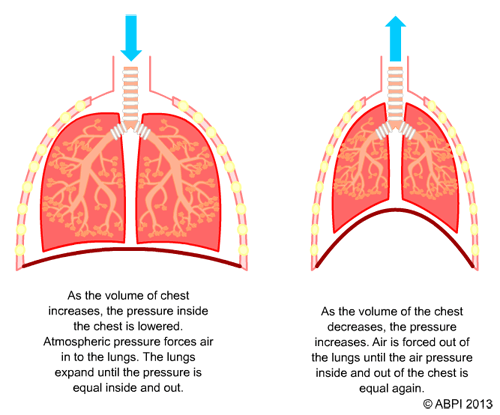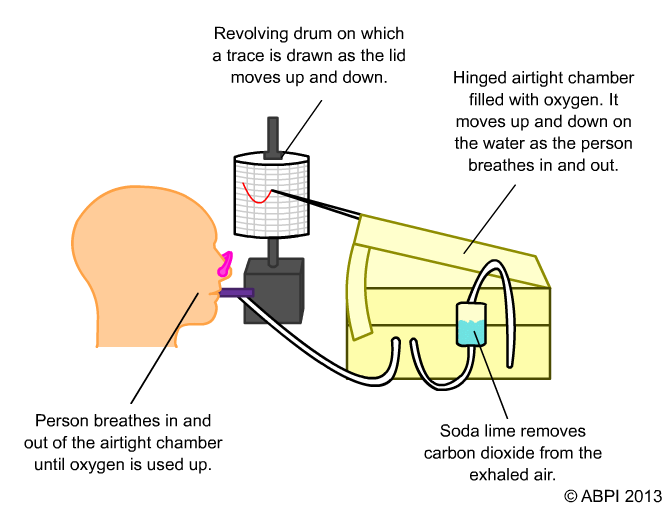This topic takes on average 55 minutes to read.
There are a number of interactive features in this resource:
 Human biology
Human biology
 Biology
Biology
 Physical education
Physical education
For your breathing system to work successfully, you need to move air into your lungs (inhalation) and then move the air out again (exhalation). To move the air into or out of your lungs the relationship between the air pressure in the lungs and atmospheric air pressure is changed. These changes are brought about by movements of your ribs, which you can see and feel, and by movements of your diaphragm which you can’t. The breathing movements change the volume of your chest, which in turn affects the air pressure inside the lungs and cause air to move passively into and out of your lungs.
 Breathing movements
Breathing movements
Intercostal muscles contract to pull the ribs up and out. The diaphragm contracts and flattens. This increases the volume of the chest so the air pressure in the lungs decreases. As a result atmospheric pressure forces air into the lungs until the pressure inside and outside the chest is equal again.
Intercostal muscles relax so the ribs fall down and in. The diaphragm relaxes and domes upwards. The pressure inside the chest increases and air is forced out of the lungs until the pressure inside and outside the chest is equal again.

How breathing movements affect the lungs

Measuring the volume of the lungs
The amount of air you breathe in and out as you inhale and exhale quietly is only part of the total volume of your lungs. This means that when you need more oxygen – for example when you are exercising hard – you can take much deeper breaths.
Scientists measure the volume of the lungs using a piece of apparatus called a spirometer. This can be very simple or very complex. A spirometer can measure both the amount of air that moves in and out of the lungs in normal breathing and the amount of air that you can move in and out of your lungs when you breathe as deeply as possible.